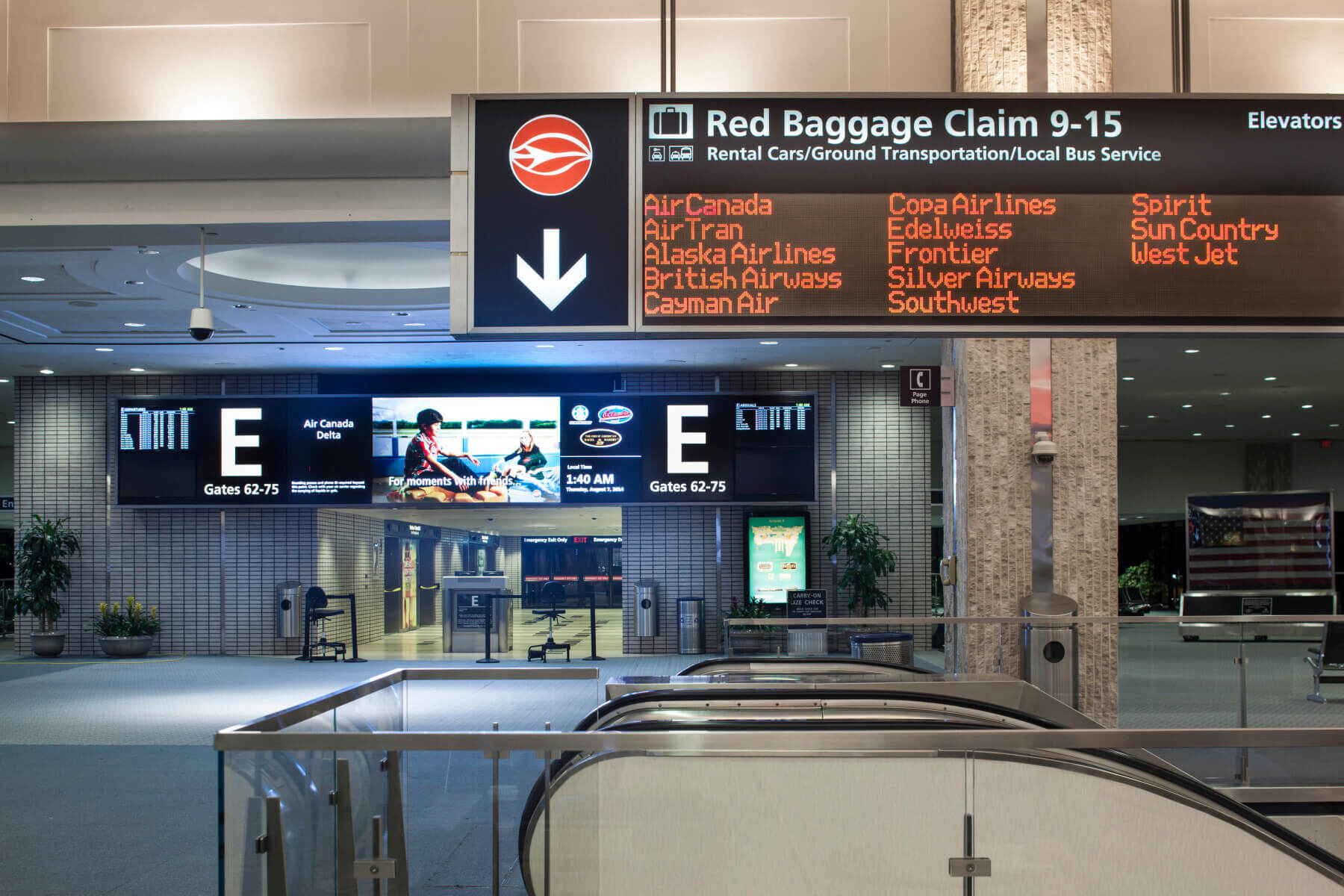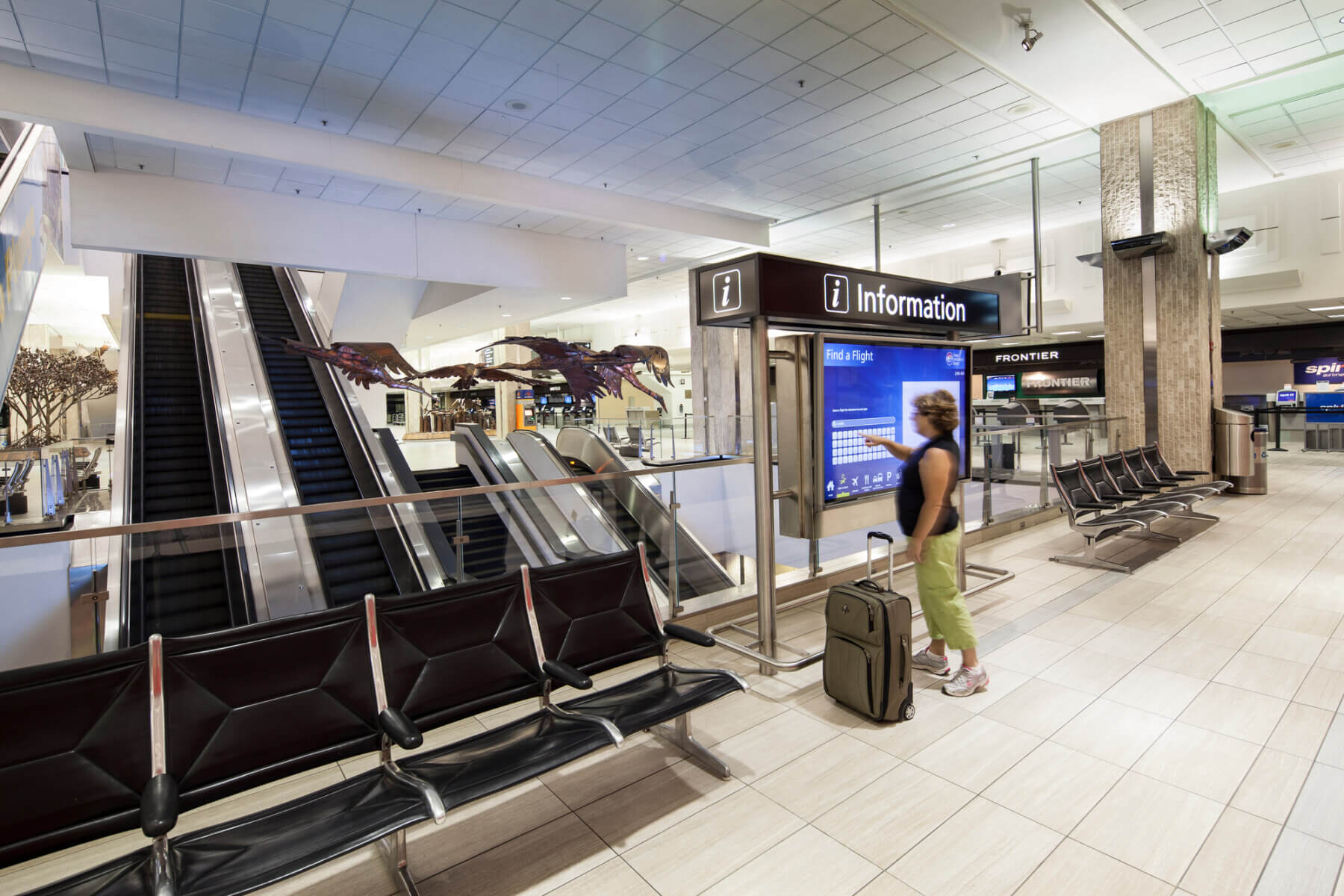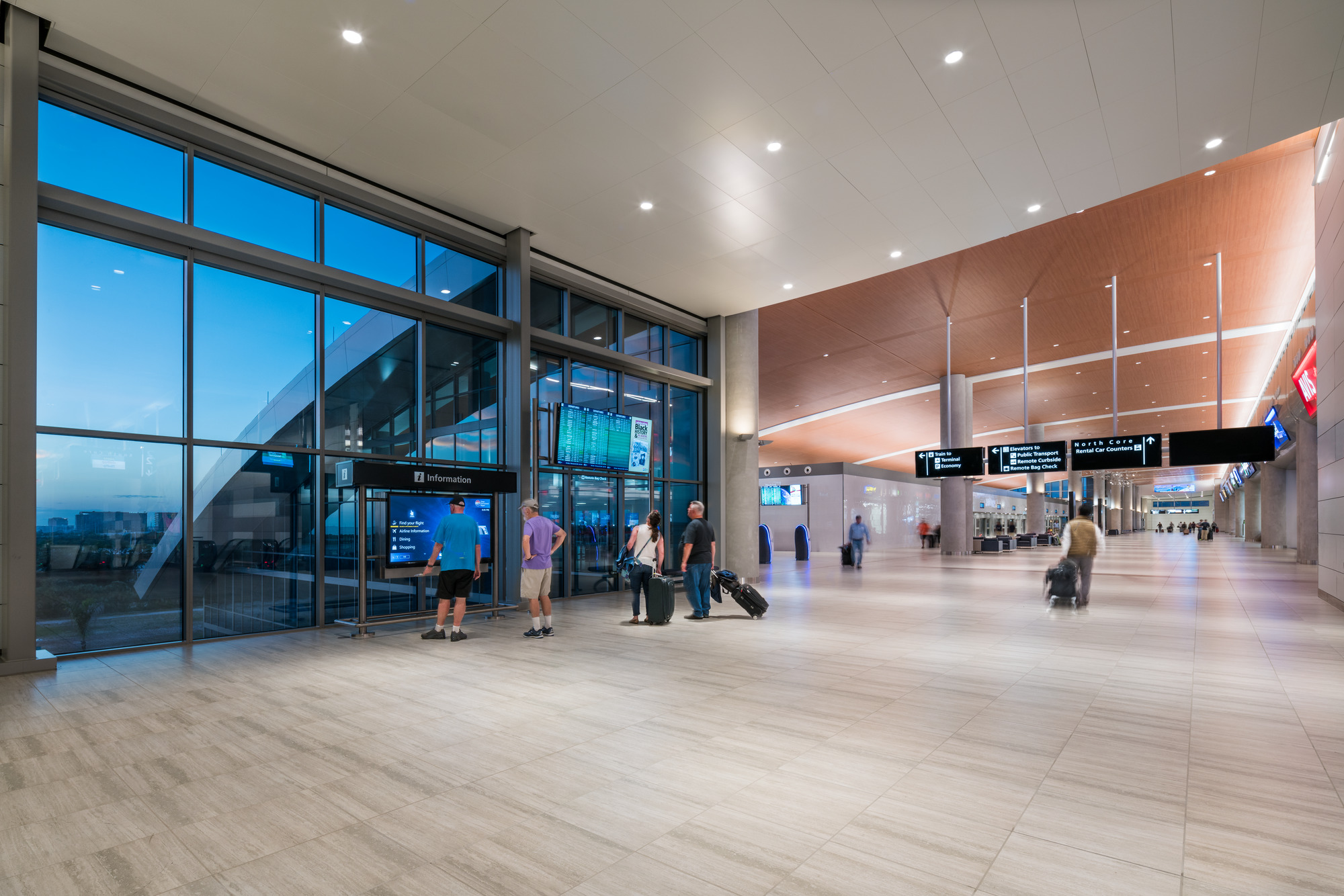A Single Source of Truth
Prior to the wayfinding standards manual, wayfinding updates at TPA were carried out on a project-by-project basis. Although the results were mostly positive, this approach lacked consistency in ways that were not always obvious. Following a wayfinding assessment of the entire airport conducted by our team, TPA recognized the value of having a unified, single source of truth, and asked us to lead the development of their wayfinding standards manual.
We developed three guiding principles for the airport’s wayfinding: safety supersedes all other design criteria, apply fundamental of transportation engineering to support TPA’s roadways, and maintain operational flexibility.
Arriving Customer Circulation Path
The Key to TPA’s Wayfinding Strategy
Within the manual, Chapter 3: Wayfinding Strategy provides the key that unlocks the wayfinding logic at TPA. For example, TPA is only one of a few airports that features a dual curbside, with a terminal that is basically a mirror image on both sides. The upside? The dual red and blue curbside design provides efficient circulation. The downside? There is increased demand placed on the wayfinding. This chapter explains how the color-coded wayfinding is hardwired into the airport’s DNA, with detailed journey segment diagrams illustrating the horizontal and vertical transitions.
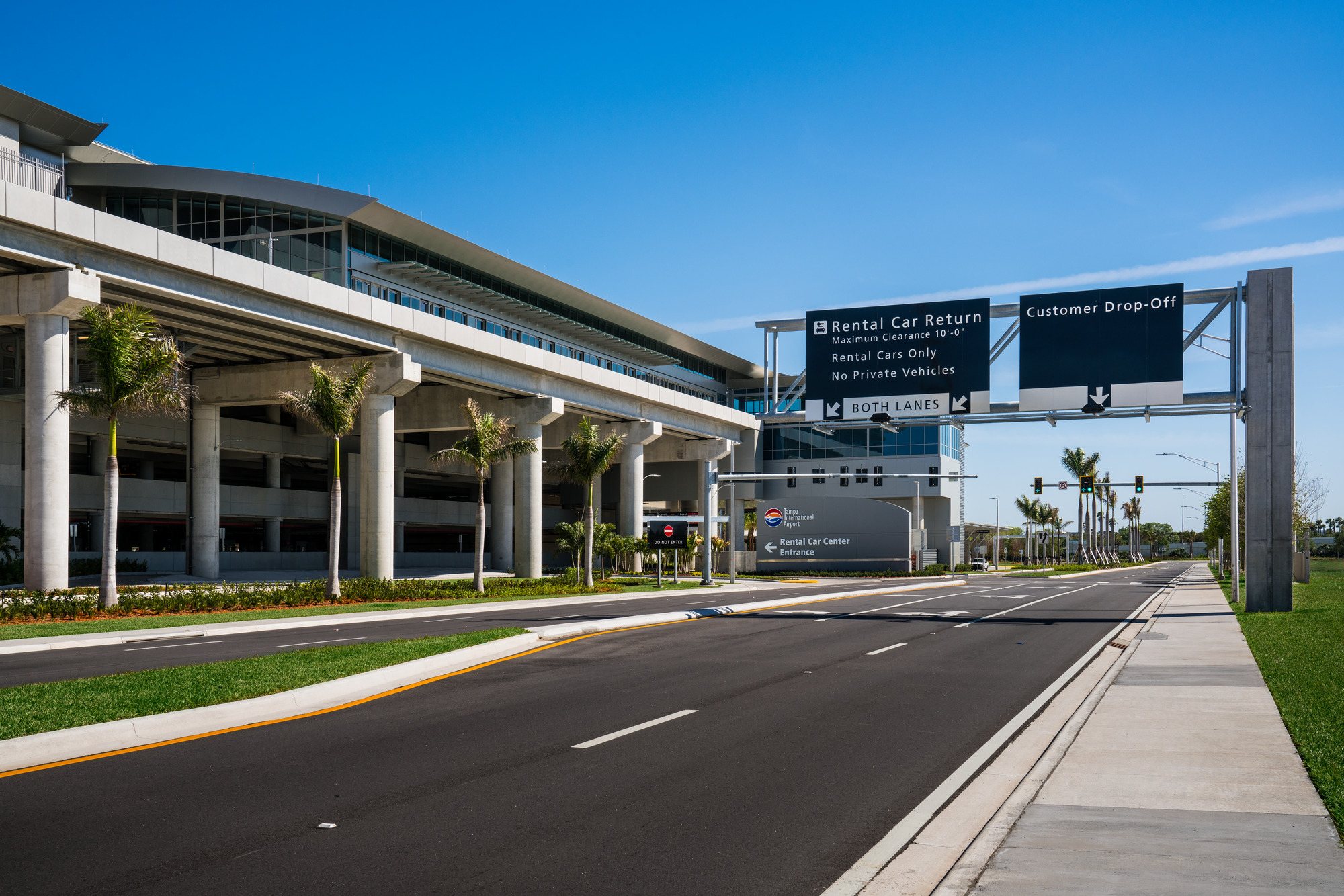
Guiding Principles
The wayfinding philosophy for TPA’s road system is a good example of how a set of guiding principles in action. “Safety first!” is the principle that supersedes all other design criteria and leads into the second guiding principle, which is based on applying the fundamentals of transportation engineering that support the safe and efficient navigation of TPA’s roadways.
Another guiding principle includes maintaining operational flexibility. TPA is comprised of a complex road system that connects terminal curbsides, multiple parking products, the Rental Car Center, and numerous other airport destinations and services. This principle recognizes the importance of being able to respond in real-time using dynamic messaging to address disruptions and keep the airport roadways functioning for motorists.

The Right Tool for the Job
Documenting a passenger’s journey through a 3,300-acre airport is tedious but essential. Chapter 3 of the manual includes an analysis of each step of the passenger journey segment that details how the wayfinding elements are applied and why the information being communicated is important to the passenger.
By using the Journey Segment Evaluation Tool, airport planners and designers understand how to effectively identify any gaps or inconsistencies in the wayfinding when new projects are planned at TPA, or when wayfinding issues are identified within existing facilities.
Departing Passenger Logic Diagram
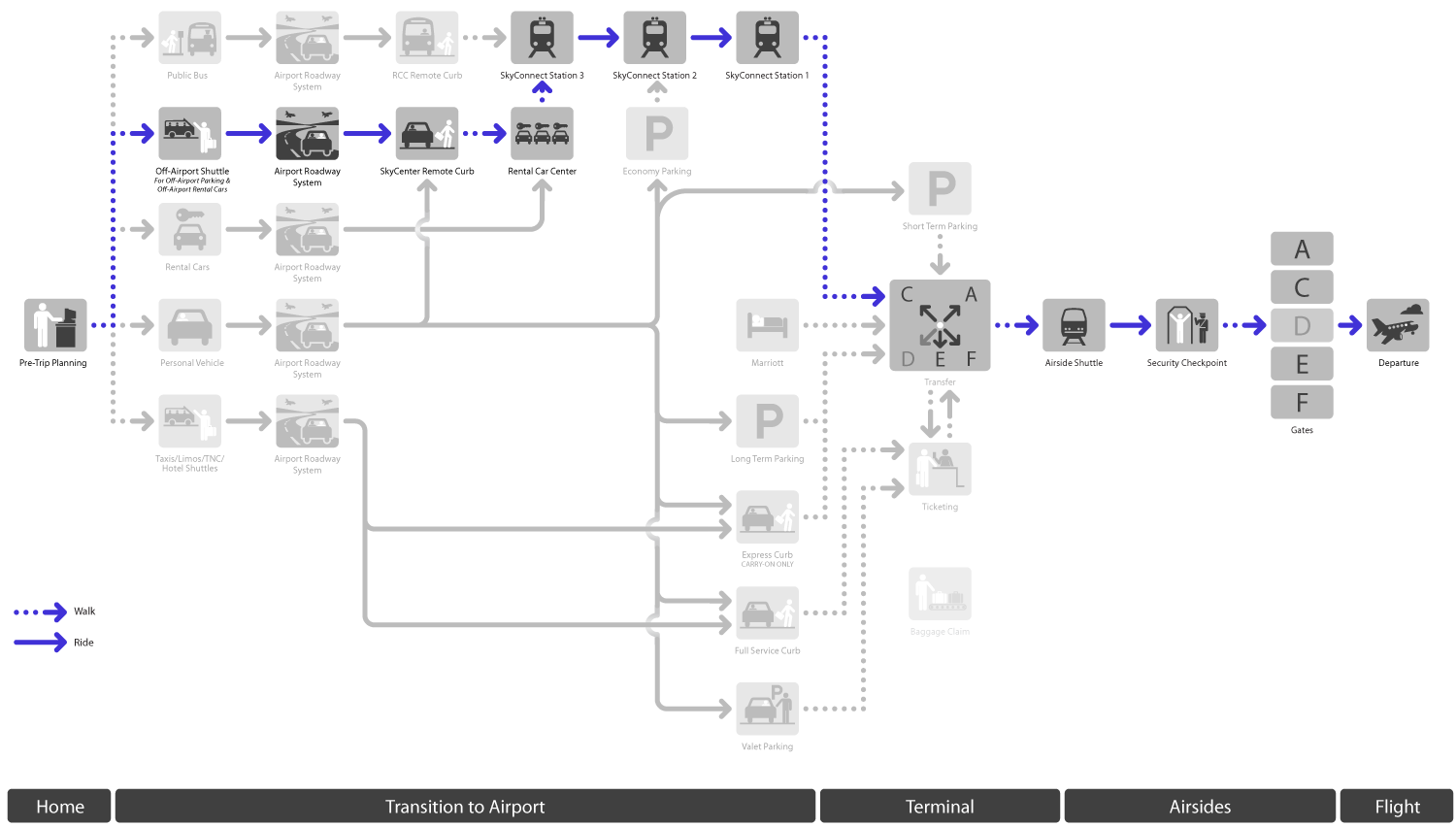
From Home to Gate
The manual suggests that the overall airport wayfinding system should be viewed as a “wayfinding web”—similar to that of a spider web—in that every strand of the wayfinding web is connected, making it virtually impossible to touch any strand without disturbing the rest of the web. Therefore, airport planners and designers need to consider how making changes to one part of an airport has a ripple effect on the rest of the wayfinding system.
A second component of the Journey Segment Evaluation Tool is the logic diagrams Gresham Smith developed for departing, arriving and connecting passengers at TPA. These logic diagrams serve as a quick reference tool to check for any wayfinding disconnects on the airport roadways, parking facilities, curbsides and terminal, as well as ensure the extent of ripple effects from any given project or change in airport operations is covered.

A Living Document
Supporting TPA’s ongoing commitment to customer satisfaction, the Tampa International Airport Wayfinding Standards Manual takes a deep dive into how the airport campus is wired to help deliver a positive wayfinding experience. The manual is designed to serve as a living document in which updates can be made to keep pace with both the physical and operational changes at an airport that is growing exponentially.

